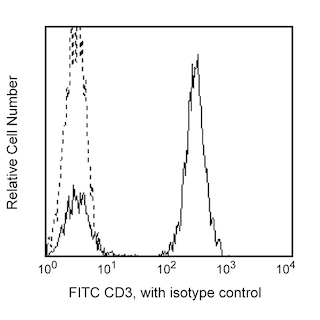-
Training
- Flow Cytometry Basic Training
-
Product-Based Training
- BD FACSDiscover™ S8 Cell Sorter Product Training
- Accuri C6 Plus Product-Based Training
- FACSAria Product Based Training
- FACSCanto Product-Based Training
- FACSLyric Product-Based Training
- FACSMelody Product-Based Training
- FACSymphony Product-Based Training
- HTS Product-Based Training
- LSRFortessa Product-Based Training
- Advanced Training
-
- BD FACSDiscover™ S8 Cell Sorter Product Training
- Accuri C6 Plus Product-Based Training
- FACSAria Product Based Training
- FACSCanto Product-Based Training
- FACSLyric Product-Based Training
- FACSMelody Product-Based Training
- FACSymphony Product-Based Training
- HTS Product-Based Training
- LSRFortessa Product-Based Training
- United States (English)
-
Change country/language
Old Browser
This page has been recently translated and is available in French now.
Looks like you're visiting us from {countryName}.
Would you like to stay on the current country site or be switched to your country?


.png)

Multicolor flow cytometric analysis of CD96 expression on human peripheral blood lymphocytes. Human peripheral whole blood was stained with FITC Mouse Anti-Human CD3 (Cat. No. 555332) and with either PE Mouse IgG1 Kappa Isotype Control (Cat. No. 554680; Left Panel) or PE Mouse Anti-Human CD96 (Cat. No. 562379; Right Panel) followed by treatment with BD Pharm Lyse™ Lysing Buffer (Cat. No. 555899). Two-color flow cytometric contour plots showing the expression of CD3 versus CD96 (or Ig Isotype Control staining) were derived for gated events with the forward- and side-light scattering characteristics of viable lymphocytes using BD FACSDiva™ Software v. 6.1.3. Flow cytometry was performed using a BD LSRFortessa™ Flow Cytometer System.
.png)

BD Pharmingen™ PE Mouse anti-Human CD96
.png)
Regulatory Status Legend
Any use of products other than the permitted use without the express written authorization of Becton, Dickinson and Company is strictly prohibited.
Preparation And Storage
Product Notices
- This reagent has been pre-diluted for use at the recommended Volume per Test. We typically use 1 × 10^6 cells in a 100-µl experimental sample (a test).
- An isotype control should be used at the same concentration as the antibody of interest.
- For fluorochrome spectra and suitable instrument settings, please refer to our Multicolor Flow Cytometry web page at www.bdbiosciences.com/colors.
- Please refer to www.bdbiosciences.com/us/s/resources for technical protocols.
- Caution: Sodium azide yields highly toxic hydrazoic acid under acidic conditions. Dilute azide compounds in running water before discarding to avoid accumulation of potentially explosive deposits in plumbing.
- Source of all serum proteins is from USDA inspected abattoirs located in the United States.
Companion Products




The 6F9 monoclonal antibody specifically binds to human CD96, also known as TACTILE (T cell activation increased late expression). CD96 is a type I transmembrane glycoprotein and member of the Ig superfamily. CD96 is expressed at low levels on resting natural killer (NK) cells and T cells and at high levels on activated NK and T cells. CD96 is also expressed on some T-cell leukemia and acute myeloid leukemia cells. CD96 may serve as a marker for acute myelogenous leukemia stem cells. CD96 plays a role in the adhesive interactions of activated NK and T cells during immune responses. CD96 binds to the poliovirus receptor (CD155) that is highly expressed by some tumor cells. CD155-mediated ligation of CD96 can induce NK cell-mediated cytotoxicity. CD96-mediated uptake of CD155 may adversely affect NK cells and thus reduce their effectiveness in anti-tumor responses.

Development References (4)
-
Fuchs A, Cella M, Giurisato E, Shaw AS, Colonna M. Cutting edge: CD96 (tactile) promotes NK cell-target cell adhesion by interacting with the poliovirus receptor (CD155).. J Immunol. 2004; 172(7):3994-8. (Biology). View Reference
-
Hosen N, Park CY, Tatsumi N, et al. CD96 is a leukemic stem cell-specific marker in human acute myeloid leukemia. Proc Natl Acad Sci U S A. 2007; 104(26):11008-11013. (Biology). View Reference
-
Majeti R. Monoclonal antibody therapy directed against human acute myeloid leukemia stem cells. Oncogene. 2011; 30(9):1009-1019. (Biology). View Reference
-
Wang PL, O'Farrell S, Clayberger C, Krensky AM. Identification and molecular cloning of tactile. A novel human T cell activation antigen that is a member of the Ig gene superfamily. J Immunol. 1992; 148(8):2600-2608. (Biology). View Reference
Please refer to Support Documents for Quality Certificates
Global - Refer to manufacturer's instructions for use and related User Manuals and Technical data sheets before using this products as described
Comparisons, where applicable, are made against older BD Technology, manual methods or are general performance claims. Comparisons are not made against non-BD technologies, unless otherwise noted.
For Research Use Only. Not for use in diagnostic or therapeutic procedures.
Report a Site Issue
This form is intended to help us improve our website experience. For other support, please visit our Contact Us page.